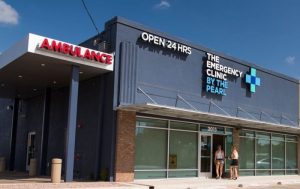
Exploring the critical aspects of Emergency Care for Broken Bones, this introduction sets the stage for a detailed discussion on the importance of prompt medical attention and effective treatment procedures.
As we delve deeper, we will uncover the different types of fractures, initial stabilization methods, diagnostic procedures, and more, shedding light on the essential steps in handling broken bones in emergency situations.
EMERGENCY CARE
When dealing with a broken bone, seeking immediate medical attention is crucial to ensure proper treatment and prevent further complications.
Emergency rooms have specific procedures and protocols in place to address broken bones effectively. Upon arrival, the patient will undergo a series of assessments, including physical exams and diagnostic tests such as X-rays, to determine the extent of the injury.
Typical Procedures in Emergency Rooms
- Immobilization of the affected area to prevent further damage
- Pain management through medications or other interventions
- Reduction of the bone if necessary to realign it properly
- Application of casts, splints, or braces to support and protect the bone during healing
- Follow-up care instructions and recommendations for recovery
Common Symptoms for Emergency Care
- Severe pain, especially with movement or pressure on the affected area
- Swelling, bruising, or deformity around the injured bone
- Inability to bear weight or use the injured limb normally
- Numbness, tingling, or coldness in the affected area
- Visible bone protrusion or an open wound at the injury site
TYPES OF BROKEN BONES

When it comes to broken bones, there are various types of fractures that may require emergency care. These fractures can range from open fractures where the bone pierces through the skin to closed fractures where the bone breaks but does not penetrate the skin. Additionally, fractures can be classified as displaced when the bone fragments are not aligned properly or non-displaced when the bone remains in its normal position.
Impact of Location on Urgency of Treatment
The location of the broken bone plays a crucial role in determining the urgency of treatment. For example, fractures near major blood vessels or organs may require immediate attention to prevent further complications. Fractures in weight-bearing bones, such as the femur or tibia, also need prompt treatment to ensure proper healing and prevent long-term mobility issues.
Assessment of Severity by Healthcare Professionals
Healthcare professionals assess the severity of a broken bone in an emergency setting through various methods. This includes physical examinations, imaging tests like X-rays or CT scans, and evaluating the extent of pain and swelling. The presence of any associated injuries or complications, such as nerve or blood vessel damage, can also influence the treatment approach and urgency of care.
INITIAL TREATMENT
When a broken bone occurs, the initial treatment is crucial in preventing further damage and promoting proper healing. Medical professionals follow specific steps to stabilize the injury and provide immediate care to the patient.
Use of Splints, Casts, or Braces
In emergency care for broken bones, medical professionals often use splints, casts, or braces to immobilize the affected area. Splints are temporary devices that help keep the bone in place until more permanent treatment can be administered. Casts, made of plaster or fiberglass, provide support and protection to the bone during the healing process. Braces are also used to stabilize the bone and allow for some movement while maintaining alignment.
Pain Management Importance
Effective pain management is a critical aspect of the initial treatment of broken bones. Controlling pain not only improves the patient’s comfort but also helps reduce stress and muscle tension around the injury site. This, in turn, can aid in the stabilization of the broken bone and prevent further complications. Pain relief methods may include medications, such as analgesics or anti-inflammatory drugs, as well as non-pharmacological approaches like ice packs or elevation of the injured limb.
DIAGNOSTIC PROCEDURES

In emergency care for broken bones, healthcare providers rely on diagnostic procedures to assess the extent of the injury and determine the appropriate treatment.Diagnostic tests commonly used to assess broken bones include X-rays, CT scans, and MRI scans. X-rays are often the first line of imaging used in emergency situations as they can quickly provide detailed images of the bones.
CT scans are more detailed than X-rays and can show the extent of the fracture and any associated soft tissue damage. MRI scans are used to get a closer look at soft tissues, such as ligaments and tendons, in addition to providing detailed images of the bones.Healthcare providers determine the extent of the injury through diagnostic imaging by carefully analyzing the images for signs of fractures, dislocations, or other abnormalities.
They assess the alignment of the bones, the severity of the fracture, and any associated soft tissue damage. This information helps them develop a treatment plan tailored to the specific needs of the patient.Quick and accurate diagnosis plays a crucial role in emergency care for broken bones. It allows healthcare providers to promptly identify the type and severity of the injury, which is essential for initiating the appropriate treatment without delay.
Timely diagnosis helps prevent further complications and ensures the best possible outcome for the patient.
In conclusion, understanding the significance of quick response and proper care for broken bones is paramount in ensuring optimal recovery and preventing complications. By being aware of the urgency and protocols involved in emergency care, individuals can take proactive steps to address such injuries effectively.
Question Bank
How soon should I seek medical help for a broken bone?
It is crucial to seek immediate medical attention for a broken bone to prevent further damage and facilitate proper healing.
What are the common symptoms that indicate the need for emergency care for a broken bone?
Symptoms like severe pain, deformity, swelling, and inability to move the affected area usually signal the need for emergency care.
How do healthcare professionals assess the severity of a broken bone in an emergency?
Healthcare professionals assess the severity based on factors like the type of fracture, location of the injury, and extent of damage visible on imaging tests.





